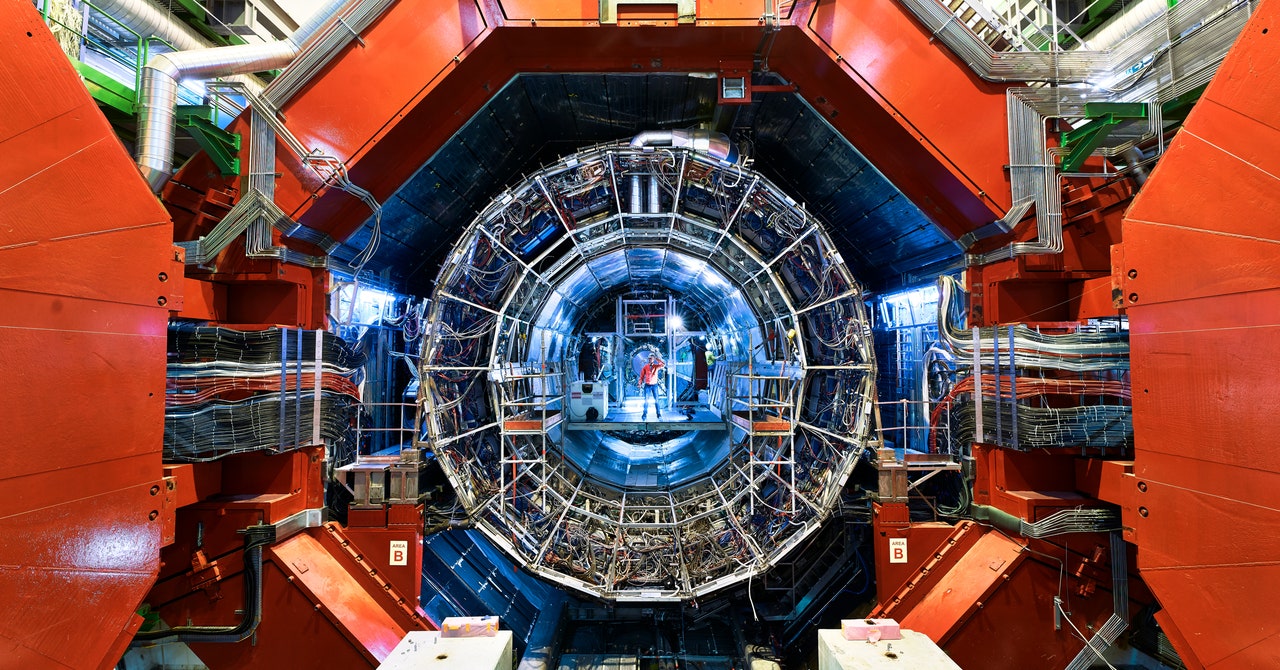[ad_1]
A few years ago, physicist Ivan Vorobyev’s team at the Large Hadron Collider began producing an exotic form of antimatter known as antihelium. Antimatter is that elusive substance that annihilates upon meeting regular matter, and antihelium is the antimatter twin of the classic helium atom, the stuff you find in party balloons. While no human has ever conclusively found a naturally occurring antihelium particle on Earth, it could be key to answering one of the biggest outstanding mysteries in physics: the nature of dark matter.
While this beast may be rare on Earth, physicists think it could be abundant in our galaxy, formed by the decay of dark matter, an invisible substance that seems to make up 85 percent of the universe’s matter. On Monday, Vorobyev’s team announced that they’d generated about 18,000 antihelium nuclei—and more notably, that they used their result to calculate the odds that Earth-based detectors could capture antihelium drifting in from space, where it might signify the presence of dark matter.
Between 2016 and 2018, Vorobyev’s team had smashed more than a billion particles in the LHC’s 16-mile ring, based in Geneva. They performed two types of particle collisions: protons with protons, and lead ions with lead ions, which break apart to reform a myriad of new particles, such as pions, kaons, and more protons. Recording the wreckage required petabytes—that’s thousands of portable hard drives—of data. Then, they began to sift through it. “We filtered out only the part that is interesting to us,” says Vorobyev, a member of the ALICE collaboration, which conducted the project. (The acronym stands for A Large Ion Collider Experiment.)
Specifically, Vorobyev’s team zeroed in on a version of the antiparticle known as antihelium-3, composed of two antiprotons and one antineutron. Vorobyev’s team isn’t the first to create antihelium-3: Scientists observed the antiparticle for the first time in 1970 by producing it in a collider. Still, nobody has ever conclusively captured it in nature. While antimatter forms naturally on our planet, it usually consists of lightweight particles such as positrons, the antimatter counterpart of electrons, which are thousands of times less massive than antihelium. But antihelium-3 is relatively heavy, and the heavier the antimatter particle, the more rarely it will be produced. “If you collide heavy ions, each additional nucleon will cost you about a factor of 300 or 400,” says Vorobyev. “That means every next nucleus will be produced with a factor 350 less than the previous one.”
Although physicists have inferred the presence of dark matter through its gravitational influence on the rotation of galaxies, they still don’t know what it is made of. Hypotheses include objects as heavy as black holes and as lightweight as 100 millionths of an electron’s mass. Two decades ago, physicists first proposed that certain dark matter particles—known as Weakly Interacting Massive Particles, or WIMPs—could annihilate with anti-dark matter to produce matter and antimatter in equal amounts. If dark matter throws off antihelium as it annihilates, finding this antiparticle would be a clue that it truly exists.
In theory, physicists searching for dark matter could actually hunt for either the matter or the antimatter it generates. “In many models, dark matter is its own antiparticle, or there’s equal amounts of dark matter and anti-dark matter,” says physicist Tim Linden of Stockholm University in Sweden, who was not involved with the LHC experiment. “Either way, you tend to generate about as many anti-particles as particles from dark matter annihilation.”
[ad_2]
Source link




